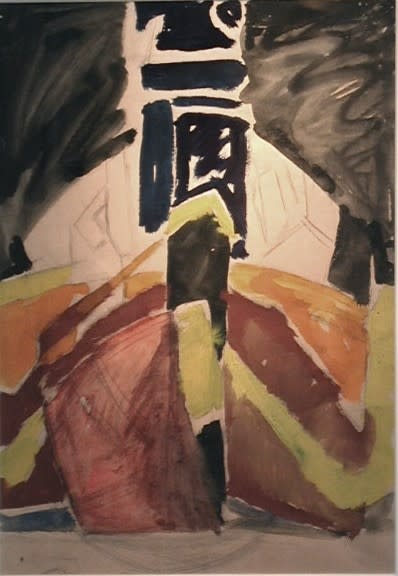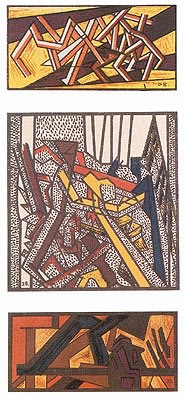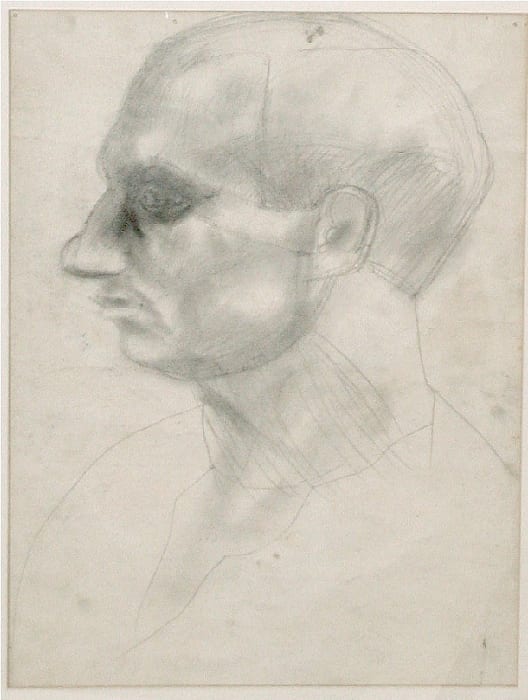David Bomberg was one of the most audacious painters of his generation at the Slade. His treatment of the human figure, in terms of angular, clear-cut forms combined with enormous energy, shows his determination to bring about a drastic renewal in British painting.
The direction taken by his art brought him into contact with Wyndham Lewis and the Vorticists, but Bomberg resisted Lewis's attempts to enlist him as a member of the movement.In 1915 Bomberg enlisted in the Royal Engineers, and his traumatic experiences at the Front brought about a profound transformation in his outlook. Bomberg moved to a more figurative style in the 1920s. His disillusion with the destructive power of the machine at war led to a few years spent experimenting with ways of making his stark pre-war style more rounded and organic.Throughout the 1930s Bomberg's art became broader and more expressive as he sought to convey the essence of his response to landscapes in Scotland and Spain. This work met with little approval in Britain. His last years were darkened by the realization that his art remained overlooked in Britain. His final landscapes and figure paintings include some of his most powerful works.














